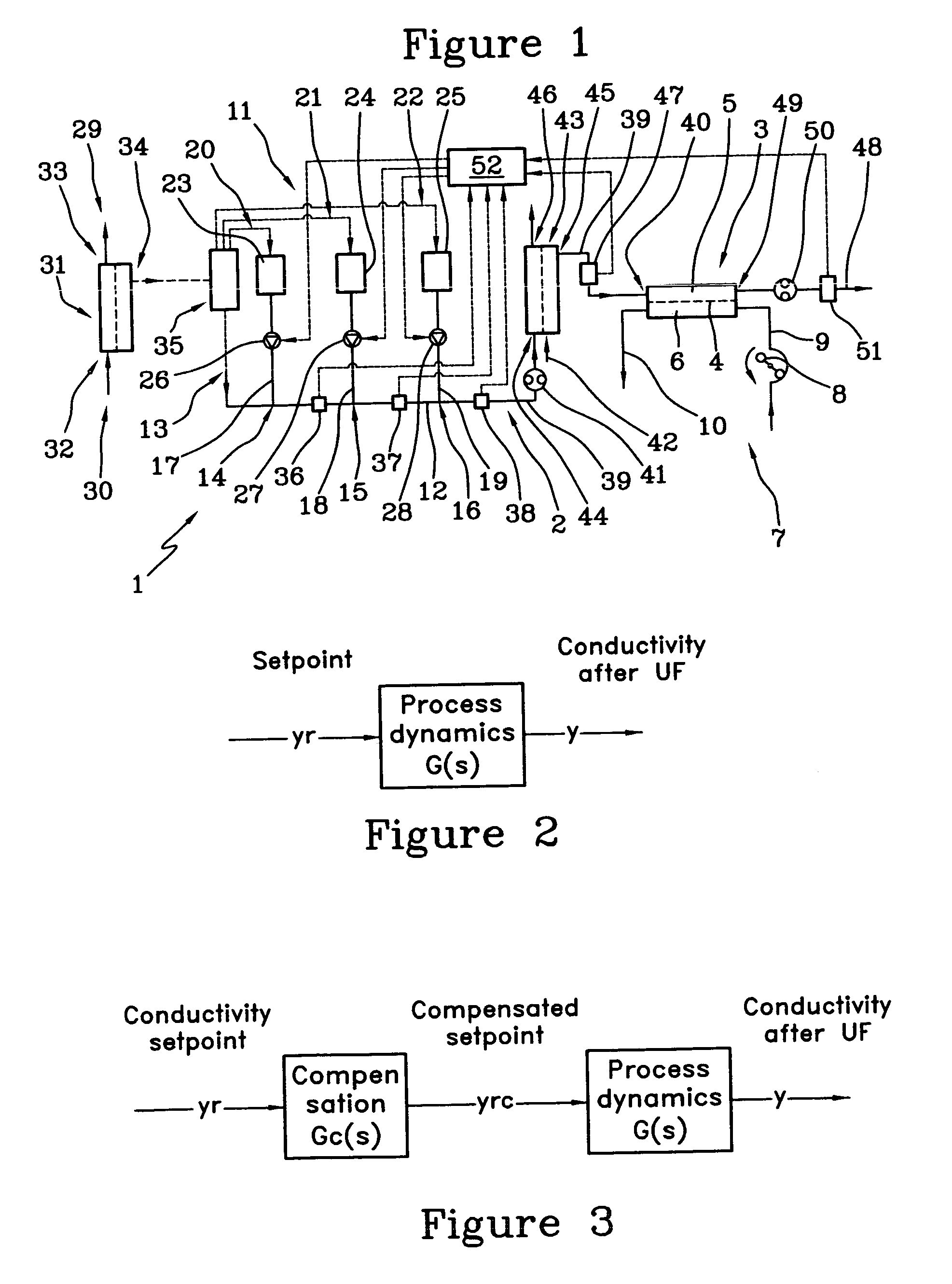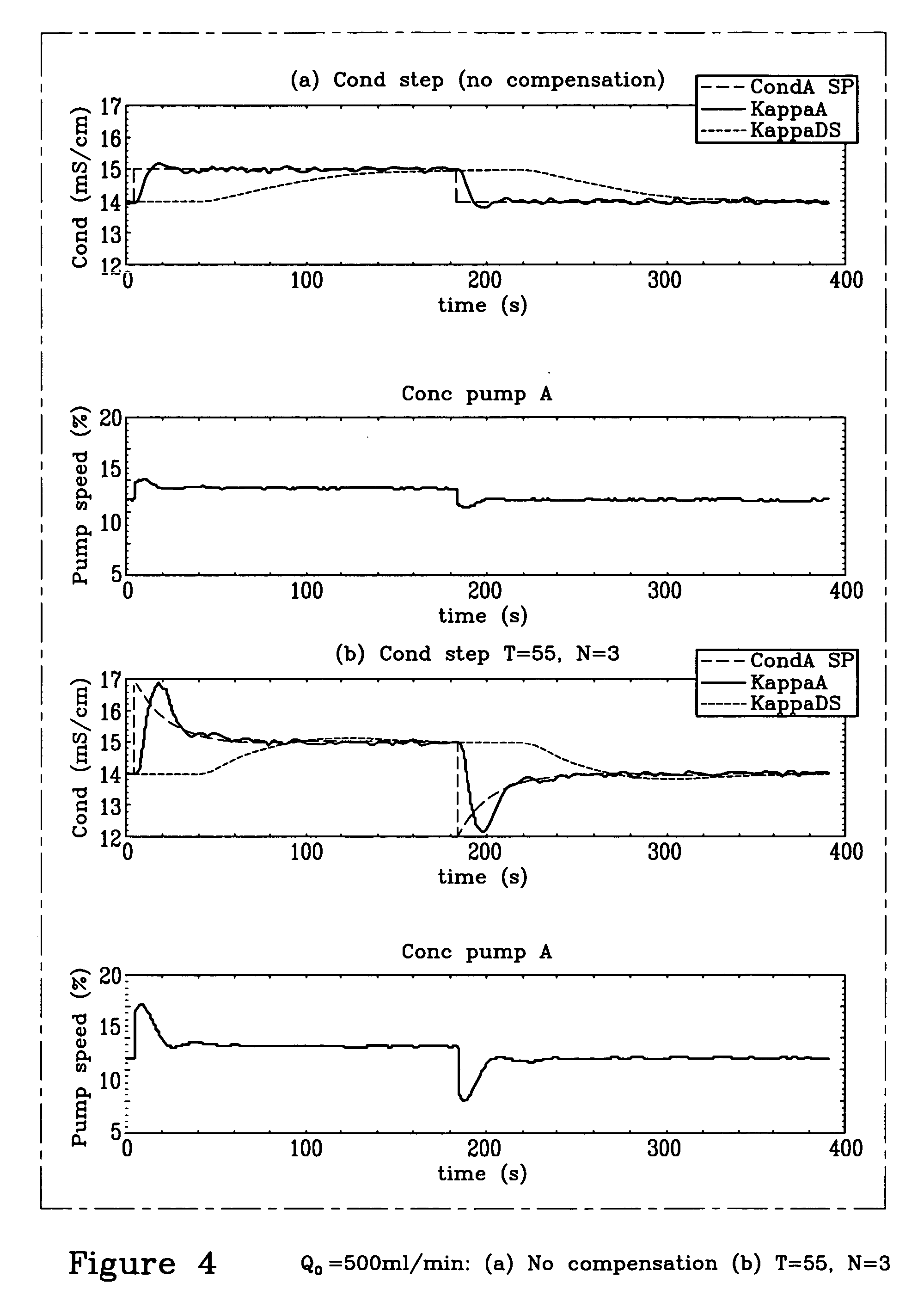Method and apparatus for determining a patient or treatment or apparatus parameter during an extracorporeal blood treatment
a technology for extracorporeal blood and apparatus, applied in the direction of solvent extraction, filtration separation, separation process, etc., can solve the problems of no longer being essentially constant in the conductivity of the inlet fluid, no longer being reliable for 2 minutes, and reducing the settling time of the response, so as to reduce the settling time and monitor the efficiency
- Summary
- Abstract
- Description
- Claims
- Application Information
AI Technical Summary
Benefits of technology
Problems solved by technology
Method used
Image
Examples
examples
[0163] In these examples a dynamic first order compensation of the set alteration has been used to speed up the conductivity response in the HDF / HF apparatus of FIG. 1 which has a clean dialysate filter (ultrafilter).
[0164] The first liquid was the fresh dialysis liquid before the clean dialysate filter and the second liquid was the cleaned fresh dialysis liquid after the clean dialysate filter and before the dialyzer.
[0165] A test was performed on the apparatus of FIG. 1 based on the following system parameter settings:
Degassing pressure:100 mmHg (abs)Dialysate main flow:300 / 500 / 900 ml / minTcA dialysate temperature set value:37° C.[0166] Conductivity set value at measurement device 36 3.1 mS / cm [after HCO3 infusion point 14]=34 mmol / l [0167] Conductivity set value at measurement device 37 3.1 mS / cm (concentrated solution 24 not used) [0168] Conductivity set value at measurement device 38 14 mS / cm [after Na infusion point 16]=approx. 140 mmol / l [0169] Conductivity Step amplitude ...
PUM
| Property | Measurement | Unit |
|---|---|---|
| conductivity | aaaaa | aaaaa |
| time constant | aaaaa | aaaaa |
| conductivity | aaaaa | aaaaa |
Abstract
Description
Claims
Application Information
 Login to View More
Login to View More - R&D
- Intellectual Property
- Life Sciences
- Materials
- Tech Scout
- Unparalleled Data Quality
- Higher Quality Content
- 60% Fewer Hallucinations
Browse by: Latest US Patents, China's latest patents, Technical Efficacy Thesaurus, Application Domain, Technology Topic, Popular Technical Reports.
© 2025 PatSnap. All rights reserved.Legal|Privacy policy|Modern Slavery Act Transparency Statement|Sitemap|About US| Contact US: help@patsnap.com



